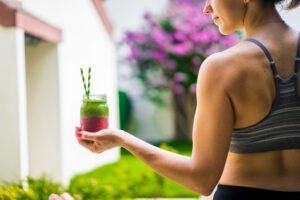 Ever wondered why some people excel in sports and exercise while others struggle? It’s a mix of factors – from genetics shaping our bodies to the nurturing environment we’re in. Genetics might set the stage, but nurture takes the spotlight. Even core performance aspects like skill, strength, flexibility, and endurance are heavily influenced by nurture [1].
Ever wondered why some people excel in sports and exercise while others struggle? It’s a mix of factors – from genetics shaping our bodies to the nurturing environment we’re in. Genetics might set the stage, but nurture takes the spotlight. Even core performance aspects like skill, strength, flexibility, and endurance are heavily influenced by nurture [1].
Whether you hit the gym to boost self-esteem, shed pounds, supercharge your mind, stave off chronic diseases, or recover from health battles, one thing’s clear: a smart exercise plan is a must. It’s about gradual progress, fine-tuning intensity based on your feedback.
Why phytochemicals support sport and regular exercise
But wait, exercise isn’t the solo hero in the health journey. Diet plays a vital role. Think about it: dodging nutrient gaps, staying hydrated, balancing proteins, carbs, and phytochemicals are key. Ignoring the influence of phytochemical during workouts might be futile or even counterproductive.
Here’s the game-changer: whether you’re a fitness newcomer, a weekend warrior smashing records, or a top-tier athlete chasing greatness [1], phytochemicals are essential and this page explains the robust science to support boosting their intake.
Curious about phytochemicals? They’re unsung heroes in plant-based foods, with a starring role in your exercise game. This page unveils why loading up on phytochemicals before and after workouts transforms the rules. Explore different types, foods hosting them, and their magic to supercharge your fitness routine.
Ready for action? We’ve got your back with simple tips to boost phytochemical intake hassle-free. Let’s inject your exercise routine with a phytochemical-powered thrill!
How phytochemicals support physical activity
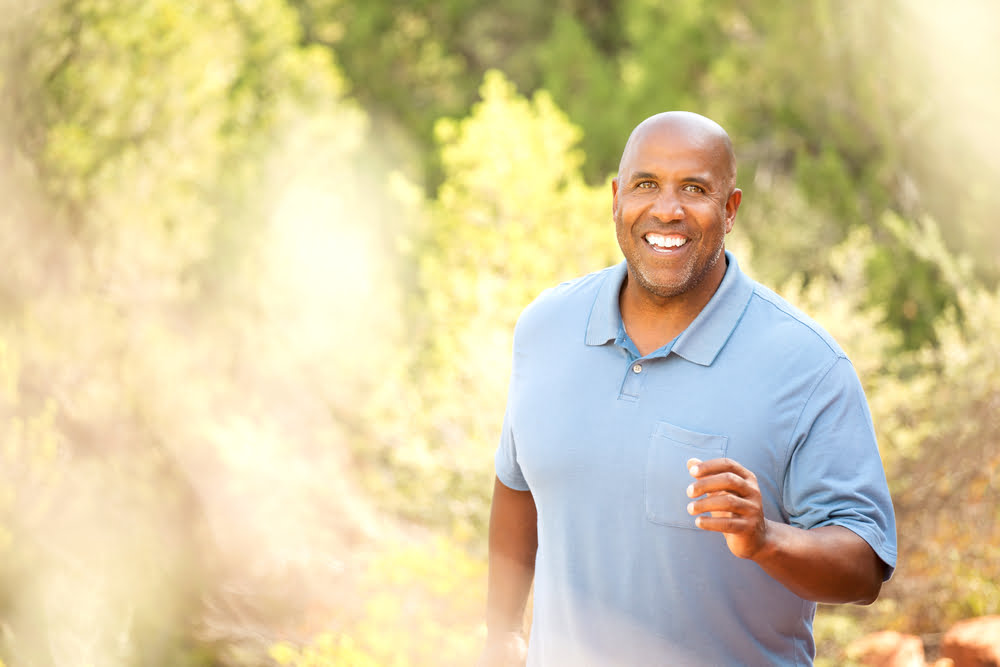 Boosting phytochemical intake helps people get the most from exercise by enabling them to train stronger for longer. Higher phytochemical intake improves safety, comfort and recovery whilst exercising, which in turn can improve motivation, enjoyment and ultimately performance. The ability of phytochemicals to enhance adapted oxidative stress enzymes is important, but there are many more attributes of phytochemical-rich food which also add benefit.
Boosting phytochemical intake helps people get the most from exercise by enabling them to train stronger for longer. Higher phytochemical intake improves safety, comfort and recovery whilst exercising, which in turn can improve motivation, enjoyment and ultimately performance. The ability of phytochemicals to enhance adapted oxidative stress enzymes is important, but there are many more attributes of phytochemical-rich food which also add benefit.
The multiple ways phytochemicals help men and women who are planning to be more physical active has been reviewed in a recently scientific paper published in 2023. This page summarises, the most notable benefits, including:
- Reducing post-exercise oxidative stress pathways
- Protecting joints and tendons
- Reducing delayed-onset muscle symptoms (DOMS) and muscle damage
- Improving muscle and tissue oxygenation
- Elevating mood and motivation to exercise
- Helping restorative sleep and circadian rhythm
- Improving gut health which enhances recovery
- Reducing viral colds and flu which disrupt training
1. Oxidative stress and DNA damage
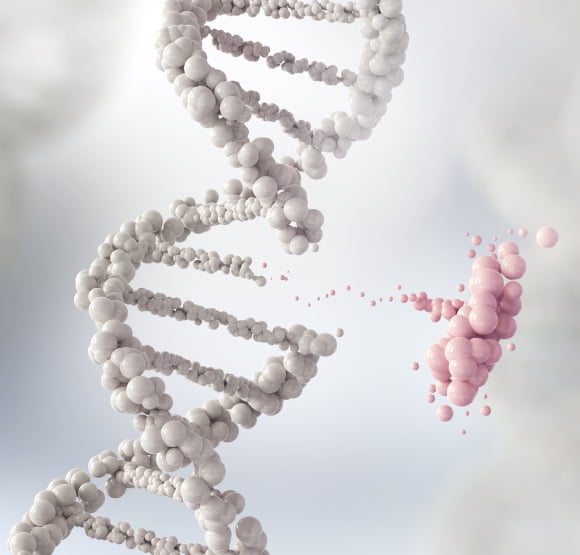
Our DNA faces damage from various sources, like radiation, sun exposure, and pollution. This damage, direct or indirect, is caused by highly reactive oxygenated species (ROS). These ROS are produced naturally during cell division or energy generation, particularly during intense activities, like unaccustomed exercise or conditions such as obesity, chronic infection, inflammation from poor diet, gut health issues, or psychological stress [4,5].
DNA damage can lead to mutations affecting growth-regulating genes, contributing to age-related illnesses like atherosclerosis, cancer, heart disease, diabetes, and more [6-8]. In exercise, excessive ROS can lead to fatigue, hinder recovery, decrease endurance and muscle strength, and raise injury risks [4,5,9].
Around 10,000 harmful DNA breaks happen daily. To counter this, intricate cellular defenses, including antioxidant enzymes like SOD, catalase, and glutathione, neutralize ROS and repair DNA.
Post-exercise, excessive ROS can overwhelm antioxidant enzymes, leading to tissue-damaging oxidative stress. In response, antioxidant gene up-regulation occurs, producing more antioxidant enzymes [9,10]. Gradually increasing exercise allows antioxidants to rise. Active individuals with proper nutrition have higher antioxidant enzyme levels, speeding recovery and protecting against environmental factors [9-14].
This natural response is hindered by mineral deficiencies (Zn, Mg, Cu, Se), and oxidative stress lasts longer if the diet lacks phytochemicals, especially in the elderly or overweight [10,17,18]. It’s also important to ensure adequate mineral intake (Read more). Phytochemicals enhance ROS response via boosting Nrf-2, which produces antioxidant enzymes [19]. They also aid in the degradation process of antioxidant enzymes, maintaining optimal oxidative balance [8,12,14,16,20,21,23,24].
A word of caution for direct anti-oxidant vitamins: Unlike phytochemicals, direct antioxidants (vitamin A, E, acetylcysteine) can impair antioxidant efficiency post-exercise, leading to more oxidative stress, hindering recovery [26]. Vitamins A and E can interfere with keap 1, keeping antioxidant levels elevated after exercise [16]. They can over-neutralize ROS, leading to anti-oxidative stress [8,21,25,27-29]. Studies reveal vitamin supplements (E, beta-carotene) worsen muscle damage, and vitamin C, when overdosed, impairs endurance performance [20,31].
Encouragingly, no valid study links phytochemical-rich foods to disease or reduced performance [32]. On the contrary, many studies report health benefits from foods like pomegranate, turmeric, citrus, broccoli, cranberry, rich in vital phytochemicals [33,34,30,35]. This includes whole food supplements [30,32,36-38].
2. Protection of joints and tendons
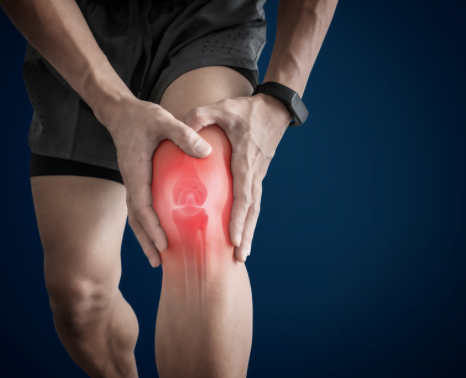 Although exercise and stretching support long-term joint health, joint stiffness after exercise can last for several days preventing retraining, especially after contact sports, running or cycling [39].This temporary negative effect on joints can be a strong demotivating factor which can put people off regular training [40, 41]. Fortunately, curcuminoids in turmeric, apigenin in chamomille, ellagic acid and quercetin and resveratrol (found in tea, grapes, polygonum cuspidatum root and pomegranate) downregulate excess tissue chronic inflammation by reducing COX–2 activation of prostaglandins [42]. This is why they help to reduce post-exercise joint pains but unlike anti-inflammatory pain killers, they also reduce oxidative damage, block matrix metalloproteinase (MMPs) enzymes responsible for extracellular matrix (cartilage) degeneration, reduce anti-apoptopic effects on chondrocytes and promote repair and regeneration of cartilage, all of which improve joint health and help prevent long-term degenerative arthritis [43-46]. What’s more, they do not adversely affect kidney function, increase blood pressure or cause indigestion. On the contrary, these foods protect the heart and help protect gastric mucosa [47]. Resveratrol, pomegranate and turmeric have an additional role as prebiotics that improve gut health and integrity, reducing the absorption of pro-inflammatory toxins into the systemic circulation, which would otherwise further trigger joint damage (see sections below).
Although exercise and stretching support long-term joint health, joint stiffness after exercise can last for several days preventing retraining, especially after contact sports, running or cycling [39].This temporary negative effect on joints can be a strong demotivating factor which can put people off regular training [40, 41]. Fortunately, curcuminoids in turmeric, apigenin in chamomille, ellagic acid and quercetin and resveratrol (found in tea, grapes, polygonum cuspidatum root and pomegranate) downregulate excess tissue chronic inflammation by reducing COX–2 activation of prostaglandins [42]. This is why they help to reduce post-exercise joint pains but unlike anti-inflammatory pain killers, they also reduce oxidative damage, block matrix metalloproteinase (MMPs) enzymes responsible for extracellular matrix (cartilage) degeneration, reduce anti-apoptopic effects on chondrocytes and promote repair and regeneration of cartilage, all of which improve joint health and help prevent long-term degenerative arthritis [43-46]. What’s more, they do not adversely affect kidney function, increase blood pressure or cause indigestion. On the contrary, these foods protect the heart and help protect gastric mucosa [47]. Resveratrol, pomegranate and turmeric have an additional role as prebiotics that improve gut health and integrity, reducing the absorption of pro-inflammatory toxins into the systemic circulation, which would otherwise further trigger joint damage (see sections below).
Although much of this mechanistic data comes from animal studies, numerous intervention studies of concentrated wholefood capsules have demonstrate clinically meaningful benefits for discomfort and long-term joint health over placebo and non-steroidal anti-inflammatory medications [48-50]. In one notable clinical study, young female volunteers were randomly assigned to take chamomile extract or placebo and undertake exhaustive treadmill exercise on a negative slope which puts more pressure on the knees whilst running. They found that the formal pain scale in the chamomile group was significantly reduced after each run compared with the control group [51].
3. Delayed onset muscle soreness (DOMS)
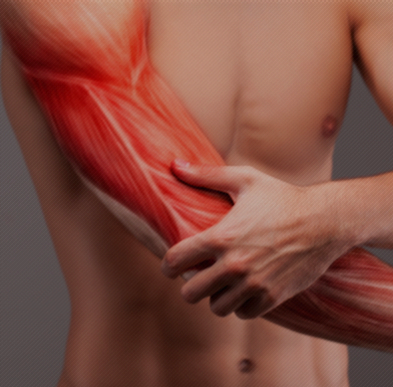 DOMS is a sore, aching, painful feeling in the muscles after unfamiliar and unaccustomed intense exercise, and which most of us have experienced from time to time. The discomfort is due to temporary muscle damage and inflammation [2]. Having some DOMS is usually a positive sign post-exercise and usually muscle heals into a stronger state than it was before the activity [52]. The level of DOMS usually diminishes following subsequent exercise sessions, providing that the intensity is gradually increased and that there is a good nutritional status. However, in some situations, the onset of muscle soreness following exercise isn’t solely due to the myofibrillar damage from the initial exercise, as a secondary injury state can occur [53]. In this situation, the body over-reacts to this muscle damage, triggering an inflammatory cascade that further damages muscle, especially in people who have a tendency to excessive inflammation. This secondary muscle damage delays re-training and thereby reducing performance [53]. This discomfort may be so intense for some individuals that it puts them off attending training and rehabilitation programmes [40].
DOMS is a sore, aching, painful feeling in the muscles after unfamiliar and unaccustomed intense exercise, and which most of us have experienced from time to time. The discomfort is due to temporary muscle damage and inflammation [2]. Having some DOMS is usually a positive sign post-exercise and usually muscle heals into a stronger state than it was before the activity [52]. The level of DOMS usually diminishes following subsequent exercise sessions, providing that the intensity is gradually increased and that there is a good nutritional status. However, in some situations, the onset of muscle soreness following exercise isn’t solely due to the myofibrillar damage from the initial exercise, as a secondary injury state can occur [53]. In this situation, the body over-reacts to this muscle damage, triggering an inflammatory cascade that further damages muscle, especially in people who have a tendency to excessive inflammation. This secondary muscle damage delays re-training and thereby reducing performance [53]. This discomfort may be so intense for some individuals that it puts them off attending training and rehabilitation programmes [40].
Sports men and woman have adopted various strategies to reduce the severity and duration of DOMs including massage, acupuncture and ice baths [54]. Nutrition interventions are gaining scientific credibility, especially those involving phytochemical-rich foods, as there is an increasing body of evidence demonstrating that specific blends of phytochemicals can work in synergy to reduce this secondary, inappropriate inflammation, thereby preventing further muscle damage [55-58]. In one randomised study, for example, turmeric was given to athletes exercising intensively and resulted in a reduction of the accumulation of advanced glycation end-products in muscle tissue and improved muscle regeneration and performance in the long term [59, 60]. In another study involving turmeric capsules, researchers reported a reduction in the biological markers of inflammation after exercise-induced muscle damage, and improved functional capacity during subsequent exercise sessions [42]. Pomegranate extract was given to recreationally active males in a double-blind, placebo-controlled, crossover, randomised design, and those randomised to the pomegranate group reported significantly attenuated weakness and reduced soreness of the elbow flexor muscles [61]. Likewise, pomegranate extract given to elite weightlifters reduced post-exercise soreness, accelerated muscle recovery and ameliorated the capacity to adhere to an intensive training program [62]. The other phytochemical-rich foods which have been shown to reduce post-exercise muscle pain include blackberries, blueberries and Moreno cherries, but more recently the muscle relaxing properties of chamomile has been of scientific interest to researchers [35, 53, 63-65]
4. Improved nitric oxide production and oxygen utilization
As mentioned above, unlike antioxidant vitamins, phytochemicals do not over deplete intracellular oxygenative species, especially the beneficial nitric oxide (NO). They also promote the conversion of nitrates in meat into NO which otherwise would have combined with protein to form carcinogenic nitrosamines [66]. NO has been shown to have many roles in the body including triggering vasodilation of arteries which increases muscle, heart and brain tissue perfusion and oxygenation, lowers excess blood pressure and improves mood [67-69]. It is likely that the same mechanism explains why regular intake of NO rich foods such as celery, pomegranate, beetroot and spinach is linked to lower dementia risks [70].
Relevant to exercise, NO-rich foods are known to help the muscles to restore their functionality and increase efficiency of oxygen usage [30, 37]. A number of studies have demonstrated that boosting intake with supplementation also improves muscle oxygenation, increases the time to fatigue and reduces finish times for endurance exercisers, and increases power amongst weightlifters [33, 62, 71-77]. In other studies, phytochemical-rich food supplementation has been shown to improve 60% V02 max during exercise, increase aerobic capacity compared to controls, reduce post-exercise fatigue and accelerate recovery both in untrained and elite athletes [78, 79]. Volunteers who took a tea extract for 8 weeks had oxygenated haemoglobin and myoglobin levels (a marker of increased skeletal muscle aerobic capacity) [80]. Hesperidin a bioflavonoid found in citrus fruit improved endothelial function (via increased NO availability), inhibited excess ROS production, decreased plasma levels of pro-inflammatory markers, and improved exercise outcomes in cyclists including power, speed and energy [81]. For elite and recreational athletes, hesperidin was found to be an ergogenic aid to enhanced muscle recovery between training sessions, optimise oxygen and nutrient supplies to the muscles, and improve anaerobic performance [82].
5. Improving gut health
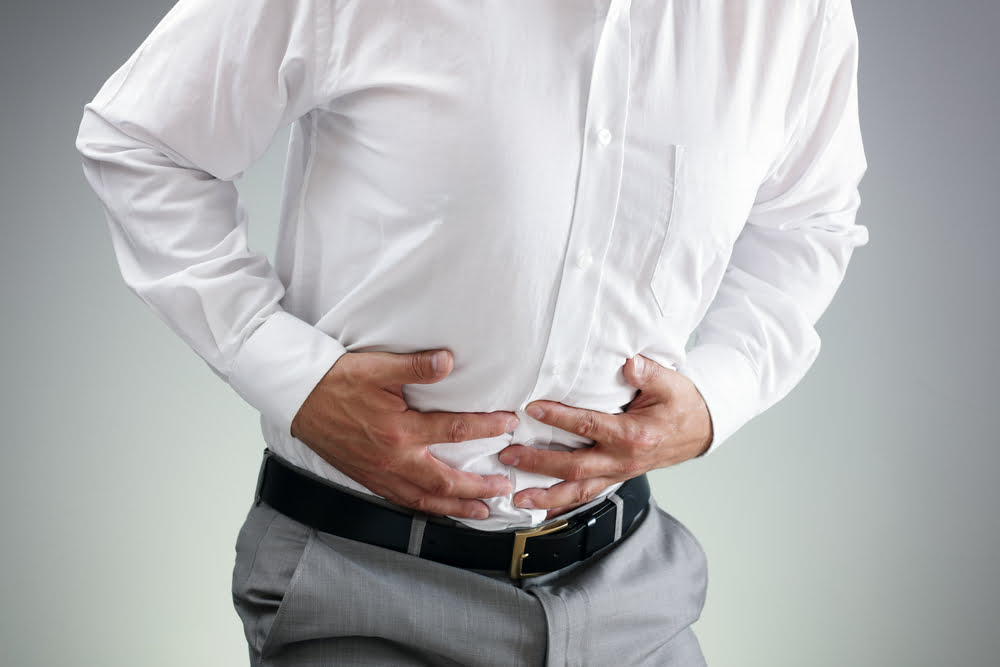 The billions of symbiotic bacteria which contribute to the gut microflora prolife and microbiome as a whole, is increasingly being recognised as an important factor for exercise performance as well as avoiding chronic disease both within and outside of the gut [83, 84]. Some phytochemicals such as ellagitannin found in pomegranate, and curcumin found in turmeric, act as prebiotics to healthy bacteria which helps improve gut health and bowel wall integrity [85-87]. Resveratrol in grapes and polygonum cuspidatum root, also enhances the formation of a protective biofilm over healthy bacteria such as Lactobacillus paracasei, facilitating adhesion, aggregation and colony formation of these healthy varients [88, 89]. Cucuminoids, which are poorly absorbed in the small bowel, pass into the colon where they promote local synthesis of antioxidant enzymes, protecting probiotic bacteria from oxidative damage [89]. In return, probiotic bacteria help the breakdown of phytochemicals into more readily absorbed and more bioactive varieties. These bioactive phytochemical not only reduce gut inflammation directly, they also help the growth of anti-inflammatory commensal bacteria. A gut wall with less oxidative damage and lower inflammation, functions better with greater integrity and more efficient immune surveillance. A healthier gut wall reduces the absorption of proinflammatory toxins into the systemic circulation, thereby avoiding excess systemic inflammation [86, 90, 91]. Relevant to exercise, studies have shown that enhancing the diet with a good quality prebiotic supplement helps to improve mobility and physical independence in the elderly, as well as improving immunity both against infection and circulating cancer cells [85]. Certainly better gut health is associated with better physical fitness and, although validation study are required, various international bodies agree that there is role for probiotics to achieve this during training [92-94]. Runners with better gut health are less prone to exercise induced diarrhoea and are less prone to respiratory infections [95]. People with a healthy gut have better vitamin D absorption and are less prone to osteoporosis, a particular risk factor for dedicated and professional cyclists [96]. Low vitamin D is associated with higher levels of unregulated hyper inflammatory cytokine production [97].
The billions of symbiotic bacteria which contribute to the gut microflora prolife and microbiome as a whole, is increasingly being recognised as an important factor for exercise performance as well as avoiding chronic disease both within and outside of the gut [83, 84]. Some phytochemicals such as ellagitannin found in pomegranate, and curcumin found in turmeric, act as prebiotics to healthy bacteria which helps improve gut health and bowel wall integrity [85-87]. Resveratrol in grapes and polygonum cuspidatum root, also enhances the formation of a protective biofilm over healthy bacteria such as Lactobacillus paracasei, facilitating adhesion, aggregation and colony formation of these healthy varients [88, 89]. Cucuminoids, which are poorly absorbed in the small bowel, pass into the colon where they promote local synthesis of antioxidant enzymes, protecting probiotic bacteria from oxidative damage [89]. In return, probiotic bacteria help the breakdown of phytochemicals into more readily absorbed and more bioactive varieties. These bioactive phytochemical not only reduce gut inflammation directly, they also help the growth of anti-inflammatory commensal bacteria. A gut wall with less oxidative damage and lower inflammation, functions better with greater integrity and more efficient immune surveillance. A healthier gut wall reduces the absorption of proinflammatory toxins into the systemic circulation, thereby avoiding excess systemic inflammation [86, 90, 91]. Relevant to exercise, studies have shown that enhancing the diet with a good quality prebiotic supplement helps to improve mobility and physical independence in the elderly, as well as improving immunity both against infection and circulating cancer cells [85]. Certainly better gut health is associated with better physical fitness and, although validation study are required, various international bodies agree that there is role for probiotics to achieve this during training [92-94]. Runners with better gut health are less prone to exercise induced diarrhoea and are less prone to respiratory infections [95]. People with a healthy gut have better vitamin D absorption and are less prone to osteoporosis, a particular risk factor for dedicated and professional cyclists [96]. Low vitamin D is associated with higher levels of unregulated hyper inflammatory cytokine production [97].
Here are tips to promote gut health and links to a high quality probiotic supplement which will help boost healthy lactobacillus intake.
6. Helping circadian rhythm improv sleep and reducing fatigue
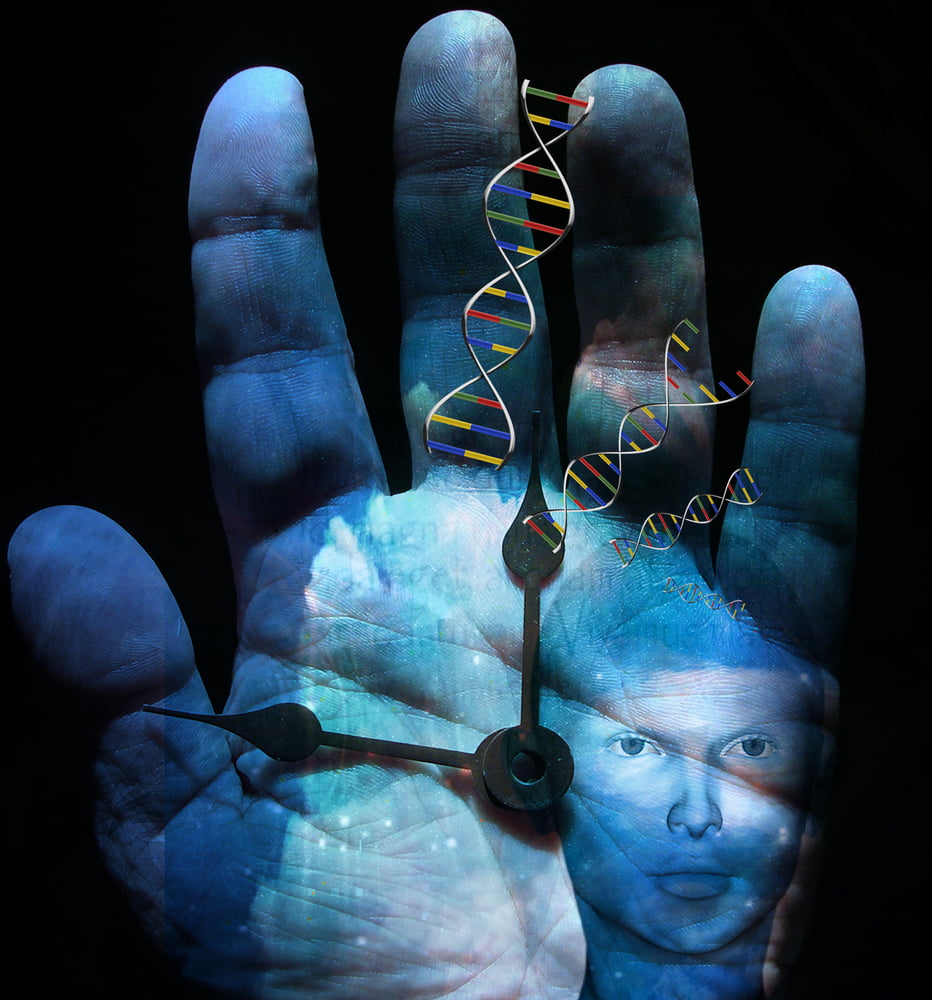 Lack of sleep impacts multiple biological pathways which negatively effects health and well-being particularly day time fatigue, emotional regulation, cognitive performance and quality of life [98, 99]. After exercise, it’s important to aim for a good night’s sleep as it is an integral part of muscle repair, physical recovery and enhancement of the adaptive process which occurs between bouts of exercise. In addition, muscle-building chemicals such as Human Growth Hormone are naturally produced by the body in the deep stages of sleep [100]. Clinically, improved sleep quality reduced the risk of both injury and illness in athletes, not only optimizing health but also potentially enhancing performance and competitive success through increased participation in training [72, 101, Watson]. Despite this, most studies have found that athletes often fail to obtain the recommended amount of sleep, threatening both performance and health [101]. Athletes face a number of obstacles which can reduce the likelihood of obtaining proper sleep, such as muscle and joint soreness, competition schedules, travel, stress, academic demands and overtraining.
Lack of sleep impacts multiple biological pathways which negatively effects health and well-being particularly day time fatigue, emotional regulation, cognitive performance and quality of life [98, 99]. After exercise, it’s important to aim for a good night’s sleep as it is an integral part of muscle repair, physical recovery and enhancement of the adaptive process which occurs between bouts of exercise. In addition, muscle-building chemicals such as Human Growth Hormone are naturally produced by the body in the deep stages of sleep [100]. Clinically, improved sleep quality reduced the risk of both injury and illness in athletes, not only optimizing health but also potentially enhancing performance and competitive success through increased participation in training [72, 101, Watson]. Despite this, most studies have found that athletes often fail to obtain the recommended amount of sleep, threatening both performance and health [101]. Athletes face a number of obstacles which can reduce the likelihood of obtaining proper sleep, such as muscle and joint soreness, competition schedules, travel, stress, academic demands and overtraining.
In light of this, people embarking on an exercise programme require more careful monitoring and intervention to promote proper sleep to improve both performance and overall health. The first step for exercisers who find it difficult to reach the state of deep sleep, is the adoption of practical sleep hygiene rules [99]. The most important of these are the lifestyle strategies which support the circadian rhythm, the biological processes which relax the mind and dampen down the body’s metabolism in preparation for sleep, in order that the body and mind know when it’s time to sleep and when it’s time to wake up [102-104]. Phytochemicals such as citrus bioflavonoids, resveratrol and quercetin in pomegranate have been reported to help sleep by supporting the body’s circadian rhythm [105, 36]. In particular, boosting intake of chamomile to levels well above that achieved from food or drink, especially combining with resveratrol, although not directly sedating, helps to induce a state of calm and a relaxed frame of mind which combine to help reduce negative thoughts at bed time, a common barrier to getting off to sleep and wakefulness throughout the night [106-112].
7. Elevating motivation to exercise
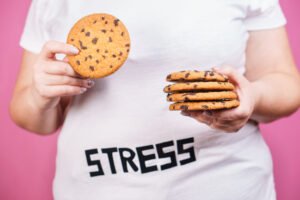 Exercise is one of the most important and effective strategies to improve mood [113] and is proven to enhance clinical outcomes in people with depression and other mental illness [114, 115]. A concerning paradigm exists, however, as having a low mood, being depressed and anxious decreases enthusiasm, demotivates people to exercise and is linked to poor adherence to continuing exercise and rehabilitation programmes [40, 41].
Exercise is one of the most important and effective strategies to improve mood [113] and is proven to enhance clinical outcomes in people with depression and other mental illness [114, 115]. A concerning paradigm exists, however, as having a low mood, being depressed and anxious decreases enthusiasm, demotivates people to exercise and is linked to poor adherence to continuing exercise and rehabilitation programmes [40, 41].
Multiple approaches have been investigated to encourage people to exercise including trying to elevate mood and reduce discomfort during exercise [40, 41, 114]. The mood elevating and anti-inflammatory properties of phytochemical-rich supplements have been evaluated in several studies and have been found to be a convenient way to improve motivation and comfort during and after exercise [40, 111, 112, 116]. In particular, resveratrol and chamomile have been found to work in synergy to lower stress and improve mood, putting both men and women in a better frame of mind to exercise [117]. Likewise, chamomile extract consumption reduces anxiety in young male karate players before a competition [118].
8. Anti-viral properties: avoiding breaks in training from colds
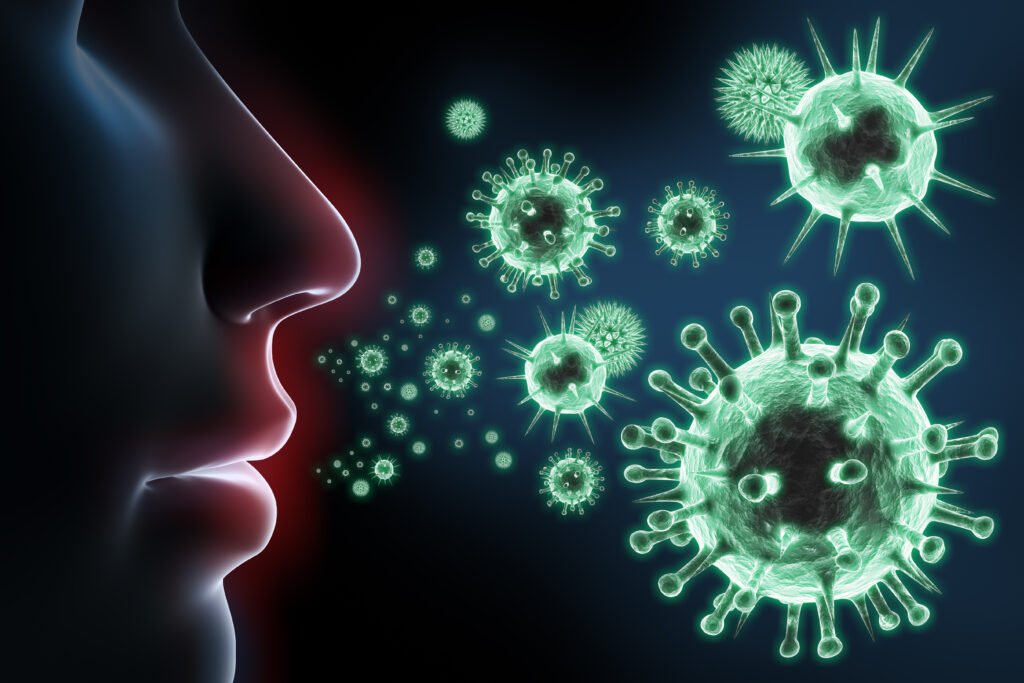 Although moderate exercise increases immunity, more intense regimens can cause temporary dips in immunity, increasing the risk of viral infections [4, 119]. Upper respiratory tract viral infections are a significant cause of breaks in training and can result in cancellation of a much anticipated sporting event [120, 121]. As well as being uncomfortable, intense exercise during a cold or flu infection is unwise as it can be associated with acute virus-induced skeletal and heart muscle damage, so it is not wise to train during the infective period [120].
Although moderate exercise increases immunity, more intense regimens can cause temporary dips in immunity, increasing the risk of viral infections [4, 119]. Upper respiratory tract viral infections are a significant cause of breaks in training and can result in cancellation of a much anticipated sporting event [120, 121]. As well as being uncomfortable, intense exercise during a cold or flu infection is unwise as it can be associated with acute virus-induced skeletal and heart muscle damage, so it is not wise to train during the infective period [120].
Unlike steroidal and non-steroidal painkillers, the ability of phytochemicals to suppress pro-inflammatory cytokines does not lead to a reduced viral immunosurveillance [4]. In fact, the opposite effect occurs. Resveratrol, for example, has been reported to increase anti-viral cytotoxic T lymphocytes and natural killer immune cells [122]. Likewise, apigenin, derived from chamomile, has been shown to induce anti-viral activity in T-immune cells [123]. In addition to these protective immune mechanisms, phytochemicals have recently been discovered to have direct anti-viral properties in laboratory studies [123-127] This explains the results of recent clinical studies which reported a combination of pomegranate, turmeric, citrus, chamomile and resveratrol-accelerated recovery from a Covid-19 infection and prevented development of long Covid-19 by enhancing viral elimination and reducing viral-associated inflammatory tissue damage [128, 129].
Pomegranate: The phytochemicals in pomegranates have particular sport enhancing properties . One study found that pomegranate extract increased time to exhaustion and improved performance in trained cyclists. Other research Trusted Source has found that pomegranate supplements may improve both endurance and muscle recovery [134,135].
In conclusion
It is now well established that a phytochemical-rich diet helps in the maintenance of a daily, optimal oxidative balance, reduces excess, inappropriate inflammation and improves gut health, all of which are vital to healthy longevity and the avoidance of chronic degenerative disease [16,32,128]. They improve the ability to exercise by avoiding muscle and joint damage by improving tissue oxygenation and recovery. For many amateur sportsmen and women, this can improve a sense of self-worth and satisfaction when exercising, thereby enhancing their incentive to exercise regularly [4, 38]. Regular exercise, in turn, is one of the most important self-help lifestyle strategies to maintain wellbeing, improve mood, happiness, independence, body shape and avoidance of the five most common causes of premature death in Western-style societies; cancer, stroke, heart disease, diabetes and dementia [130,131].
There are several ways in which phytochemical intake can be increased, most obviously, eating more colourful, aromatic herbs, spices, teas, nuts, vegetables and fruit on a daily basis. Juices and smoothies will further concentrate phytochemical levels but this can remove the bulk, and so will increase the glycaemic index (GI) and free sugar content. Concentrating dried phytochemical-rich whole foods into a capsule is a convenient way to supplement total intake and to spread it across the day without effecting the GI. Fortunately, condensing these whole foods does not usually reduce phytochemicals content which is most often concentrated by the drying process [132].
Source evidence for this page: Thomas, Robert, Madeleine Williams, Jeffrey Aldous, and Kevin Wyld. 2023. “Multiple Biological Mechanisms for the Potential Influence of Phytochemicals on Physical Activity Performance: A Narrative Review” Nutraceuticals 3, no. 3: 353-365. https://doi.org/10.3390/nutraceuticals3030027
References
- McAuley, A.B., Baker, J. and Kelly, A.L., How nature and nurture conspire to influence athletic success. InBirth
Advantages and Relative Age Effects in Sport (pp. 159-183). Routledge. - Rawson, E.S.; Miles, M.P., Larson-Meyer, D.E. Dietary Supplements for Health, Adaptation and Recovery in Athletes. Int J Sport Nutr Exerc Metab. 2018, Mar 1;28(2):188-199. doi: 10.1123/ijsnem.2017-0340. Epub 2018, Feb 19. PMID: 29345167.
- Schmid, M.J.; Charbonnet, B.; Conzelmann, A.; Zuber C. More Success With the Optimal Motivational Pattern? A Prospective Longitudinal Study of Young Athletes in Individual Sports. Front Psychol. 2021, 20;11:606272.
- Thomas, R.; Kenfield, S.A.; Jimenez, A. Exercise-induced biochemical changes and their potential influence on cancer: a scientific review.Br J Sports Med. 2017, 51:640-644.
- R.; Kenfield, S.A.; Yanagisawa, Y.; Newton R. Why exercise has a crucial role in cancer prevention, risk reduction and improved outcomes. Br Med Bull. 2021, Sep 10;139(1):100-119.
- Batty, M., Bennett, M. R., & Yu, E. The role of oxidative stress in atherosclerosis.Cells, 2022, 11(23), 3843.
- Buccellato, F., D’Anca, M., Fenoglio, C., Scarpini, E. and Galimberti, D. Role of oxidative damage in alzheimer’s disease and neurodegeneration: From pathogenic mechanisms to biomarker discovery.Antioxidants, 2021, 10(9), p.1353.
- Forman, H. J., & Zhang, H. . Targeting oxidative stress in disease: Promise and limitations of antioxidant therapy.Nature Reviews Drug Discovery, 2021, 20(9), 689-709.
- Powers, Scott K., Erica Goldstein, Matthew Schrager, and Li Li Ji. 2023. “Exercise Training and Skeletal Muscle Antioxidant Enzymes: An Update”Antioxidants 12, no. 1: 39. https://doi.org/10.3390/antiox12010039
- Kojda, G.; Hambrecht, R. Molecular mechanisms of vascular adaptations to exercise. Physical activity as an effective antioxidant therapy? Cardiovasc Res. 2005, 67:187–197.
- Poljsak B. Strategies for reducing or preventing the generation of oxidative stress. Oxid Med Cell Longev. 2011, 2011:194586. doi: 10.1155/2011/194586. Epub 2011 Dec 10. PMID: 22191011; PMCID: PMC3236599.
- Ristow, M.; Zarse, K.; Oberbach, A. Antioxidants prevent health-promoting effects of physical exercise in humans. 2009, 106(21):8665–8670.
- Schulz, T.J.; Zarse, K.; Voigt, A.; Urban, N.; Birringer, M.; Ristow, M. Glucose restriction extends Caenorhabditis elegans life span by inducing mitochondrial respiration and increasing oxidative stress. Cell Metab. 2007, 6(4):280-293.
- Martel J, Ojcius DM, Ko YF, Ke PY, Wu CY, Peng HH, Young JD. Hormetic effects of phytochemicals on health and longevity. Trends in Endocrinology & Metabolism. 2019 Jun 1;30(6):335-46.
- Thomas, R.; Butler, E.; Macchi, F.; Williams, M. Phytochemicals in cancer prevention and management? BJMP. 2015, 8(2):348-354.
- Higgins MR, Izadi A, Kaviani M. Antioxidants and Exercise Performance: With a Focus on Vitamin E and C Supplementation. Int J Environ Res Public Health. 2020 Nov 15;17(22):8452. doi: 10.3390/ijerph17228452. PMID: 33203106; PMCID: PMC7697466.
- Dimauro I, Grazioli E, Lisi V, Guidotti F, Fantini C, Antinozzi C, Sgrò P, Antonioni A, Di Luigi L, Capranica L, Caporossi D. Systemic response of antioxidants, heat shock proteins, and inflammatory biomarkers to short-lasting exercise training in healthy male subjects. Oxidative Medicine and Cellular Longevity. 2021 Nov 22;2021
- Marseglia, L.; Manti, S.; D’Angelo, G.; Nicotera, A.; Parisi, E.; Di Rosa, G.; Gitto, E.; Arrigo, T. Oxidative Stress in Obesity: A Critical Component in Human Diseases. Int J Mol Sci. 2015 Jan, 16(1):378.
- Magbanua, M.J.; Richman, E.L.; Sosa, E.V.; Jones, L.W.; Simko, J.; Shinohara, K. Physical activity and prostate gene expression in men with low-risk prostate cancer. Cancer causes control. 2014, 25(4):515-523.
- Vargas-Mendoza N, Morales-González Á, Madrigal-Santillán EO, Madrigal-Bujaidar E, Álvarez-González I, García-Melo LF, Anguiano-Robledo L, Fregoso-Aguilar T, Morales-Gonzalez JA. Antioxidant and adaptative response mediated by Nrf2 during physical exercise. Antioxidants. 2019 Jun 25;8(6):196.
- Avery, N.G.; Kaiser, J.L.; Sharman, M.J.; Scheett, T.P.; Barnes, D.M.; Gómez, A.L. Effects of vitamin E supplementation on recovery from repeated bouts of resistance exercise. J Strength Cond Res. 2003, Nov;17(4):801-809.
- McMahon, M.; Itoh, K.; Yamamoto, M. Keap1-dependent proteasomal degradation of transcription factor Nrf2 contributes to the negative regulation of antioxidant response element-driven gene expression. J Biol Chem. 2003 Jun, 13;278(24):21592-21600.
- Peternelj, T.T.; Coombes, J.S. Antioxidant Supplementation during Exercise Training: Beneficial or Detrimental? Sports Med (Auckland, N.Z.). 2011, 41(12):1043-1069.
- Lotito, S.B.; Frei, B. Consumption of flavonoid-rich foods and increased plasma antioxidant capacity in humans: cause, consequence or epiphenomenon? Free Radic Biol Med. 2006 Dec, 15;41(12):1727-1746.
- Miller, E.R.; Pastor-Barriuso, R.; Appel, L.J.; Guallar, E. Meta-analysis: high-dosage vitamin E supplementation may increase all-cause mortality. Ann Intern Med. 2005, 142(1):37–46.
- Ghazzawi, H.A.; Hussain, M.A.; Raziq, K.M.; Alsendi, K.K.; Alaamer, R.O.; Jaradat, M.; Alobaidi, S.; Al Aqili, R.; Trabelsi, K.; Jahrami, H. Exploring the Relationship between Micronutrients and Athletic Performance: A Comprehensive Scientific Systematic Review of the Literature in Sports Medicine.Sports 2023, 11, 109. https://doi.org/10.3390/sports11060109
- Myung, S.K.; Kim, Y.; Ju, W.; Choi, H.J.; Bae, W.K. Effects of antioxidant supplements on cancer prevention: meta-analysis of randomized controlled trials. Ann Oncol. 2010, 21(1):166–179.
- Collins, R.; Armitage, J.; Parish, S.; Sleight ,P.; Peto, R. MRC/BHF heart protection study of antioxidant vitamin supplementation in 20,536 high-risk individuals: a randomised placebo-controlled trial. Lancet. 2002, 360(9326):23–33.
- Mursu, J.; Robien, K.; Harnack, L.J.; Park, K.; Jacobs, D.R. Jr. Dietary supplements and mortality rate in older women: the Iowa women’s health study. Arch Intern Med. 2011, 171(18):1625–1633.
- Crum, E.M.; Barnes, M.J.; Stannard, S.R. Multiday pomegranate extract supplementation decreases oxygen uptake during submaximal cycling exercise, but co-supplementation with N-acetylcysteine negates the effect. Int J Sport Nutr Exerc Metab. 2018, 28(6):586-592. DOI: 10.1123/ ijsnem.2017-0407.
- Gomez-Cabrera, M-C.; Domenech, E.; Romagnoli, M.; Arduini, A.; Borras, C.; Pallardo, F.V.; Sastre, J.; Viña, J. Oral administration of vitamin C decreases muscle mitochondrial biogenesis and hampers training-induced adaptations in endurance performance. Am J Clin Nutr. 2008 Jan, 87(1):142-9. doi: 10.1093/ajcn/87.1.142.
- Thomas, R.; Williams, M.; Sharma, H.; Chaudry, A.; Bellamy, P. A double-blind, placebo-controlled randomised trial evaluating the effect of a polyphenol-rich whole food supplement on PSA progression in men with prostate cancer-the U.K. NCRN Pomi-T study. Prostate Cancer Prostatic Dis.2014, 17(2):180-186.
- Malaguti, M.; Angeloni, C.; Hrelia, S. Polyphenols in exercise performance and prevention of exercise-induced muscle damage. Oxid Med Cell Longev. 2013, 2013:825928. doi: 10.1155/2013/825928. Epub 2013 Jul 24.
- Zarfeshany, A.; Asgary, S.; Javanmard, S.H. Potent health effects of pomegranate. Adv Biomed Res. 2014, 3:100. DOI: 10.4103/2277-9175.129371
- Srivastava, J,K.; Shankar, E.; Gupta S. Chamomile: a herbal medicine of the past with bright future. Mol Med Rep. 2010 Nov, 1;3(6):895-901. doi: 10.3892/mmr.2010.377. PMID: 21132119; PMCID: PMC2995283
- Huang, W.C.; Chiu, W.C.; Chuang, H.L.; Tang, D-W.; Lee, Z-M.; Wei, L. Effect of curcumin supplementation on physiological fatigue and physical performance in mice. Nutrients. 2015 Jan, 30;7(2):905-921.
- Ammar, A.; Turki, M.; Chtourou H.; Hammouda, O.; Trabelsi, K.; Kallel, C. Pomegranate Supplementation Accelerates Recovery of Muscle Damage and Soreness and Inflammatory Markers after a Weightlifting Training Session. PLoS One. 2016 Oct, 20;11(10):e0160305.
- Gonçalves, A.C.; Gaspar, D.; Flores-Félix, J.D.; Falcão, A.; Alves, G.; Silva, L.R. Effects of Functional Phenolics Dietary Supplementation on Athletes’ Performance and Recovery: A Review. Int J Mol Sci. 2022 Apr, 23(9):4652.
- Kawabata S, Murata K, Nakao K, Sonoo M, Morishita Y, Oka Y, Kubota K, Kuroo-Nakajima A, Kita S, Nakagaki S, Arakawa K. Effects of exercise therapy on joint instability in patients with osteoarthritis of the knee: A systematic review. Osteoarthritis and Cartilage Open. 2020 Dec 1;2(4):100114
- Firth, J.; Rosenbaum, S.; Stubbs, B.; Gorczynski, P.; Yung, A.R.; Vancampfort, D. Motivating factors and barriers towards exercise in severe mental illness: a systematic review and meta-analysis. Psychol Med. 2016 Oct, 46(14):2869-2881.
- Brand, R.; Cheval, B. Theories to Explain Exercise Motivation and Physical Inactivity: Ways of Expanding Our Current Theoretical Perspective. Front Psychol. 2019, 10:1147 https://doi.org/10.3389/fpsyg.2019.01147.
- McFarlin, B.K.; Venable, A.S.; Henning, A.L.; Best Sampson, J.N.; Pennel, K.; Vingren, J.L. Reduced inflammatory and muscle damage biomarkers following oral supplementation with bioavailable curcumin. BBA Clinical. 2016, 18(5):72-78.
- Tian Z, Zhang X, Sun M. Phytochemicals Mediate Autophagy Against Osteoarthritis by Maintaining Cartilage Homeostasis.
Front Pharmacol. 2021 Dec 20;12:795058. doi: 10.3389/fphar.2021.795058. PMID: 34987406; PMCID: PMC8722717. - Alamgeer, Hasan UH, Uttra AM, Qasim S, Ikram J, Saleem M, Niazi ZR. Phytochemicals targeting matrix metalloproteinases regulating tissue degradation in inflammation and rheumatoid arthritis. Phytomedicine. 2020 Jan;66:153134. doi: 10.1016/j.phymed.2019.153134. Epub 2019 Nov 8. PMID: 31812101.
- Bhattacharya SO, Mandal SK, Akhtar MS, Dastider DI, Sarkar SI, Bose SA, Bose AN, Mandal SA, Kolay AR, Sen DJ, KUMAR A. Phytochemicals in the treatment of arthritis: Current knowledge. Int J Curr Pharma Res. 2020;12(4).
- Sirše M. Effect of Dietary Polyphenols on Osteoarthritis—Molecular Mechanisms. Life. 2022 Mar 16;12(3):436
- Chaudhari R, Dhole V, More S, Kushwaha ST, Takarkhede S. Shealth Benefits of Herbs and Spices-review. World J. Pharm. Res. 2021 Jan 7;10(3)
- Davis, J.M.; Murphy, E.A.; Carmichael, M.D.; Zielinski, M.R.; Groschwitz, C.M.; Brown, A.S. Curcumin effects on inflammation and performance recovery following eccentric exercise-induced muscle damage. Am J Physiol Regul Integr Comp Physiol. 2007, 292(6): 2168-2173.
- Zeng L, Yang T, Yang K, Yu G, Li J, Xiang W, Chen H. Efficacy and Safety of Curcumin and Curcuma longa Extract in the Treatment of Arthritis: A Systematic Review and Meta-Analysis of Randomized Controlled Trial. Front Immunol. 2022 Jul 22;13:891822. doi: 10.3389/fimmu.2022.891822. PMID: 35935936; PMCID: PMC9353077.
- Nieman, D.C.; Shanely, R.A.; Luo, B.; Dew, D.; Meaney, M.P.; Sha, W. A commercialized dietary supplement alleviates joint pain in community adults: a double-blind, placebo-controlled community trial. Nutr J. 2013 Nov 25, 12(1):154. Epub 2013, 25.
- Sabzevar, M.K.; Haghighi, A.; Askari, R. The Effect of Short-term Use of Chamomile Essence on Muscle Soreness in Young Girls after an Exhaustive Exercise. J Med Plants. 2017, 16(62):63-73.
- Heiss R, Lutter C, Freiwald J, Hoppe MW, Grim C, Poettgen K, Forst R, Bloch W, Hüttel M, Hotfiel T. Advances in delayed-onset muscle soreness (DOMS)–part II: treatment and prevention. Sportverletzung· Sportschaden. 2019 Mar;33(01):21-9.
- Meamarbashi, A. Herbs and natural supplements in the prevention and treatment of delayed-onset muscle soreness. Avicenna J Phytomed. 2017, Jan-Feb; 7(1):16-26. PMID: 28265543; PMCID: PMC5329173.
- Visconti L, Forni C, Coser R, Trucco M, Magnano E, Capra G. Comparison of the effectiveness of manual massage, long-wave diathermy, and sham long-wave diathermy for the management of delayed-onset muscle soreness: a randomized controlled trial. Archives of physiotherapy. 2020 Dec;10(1):1-7.
- Basham, S.A.; Waldman, H.S.; McAllister, M.J. Effect of Curcumin Supplementation on Exercise-Induced Oxidative Stress, Inflammation, Muscle Damage and Muscle Soreness. J Diet Suppl. 2019, 26:1-4.
- Sonkodi B. Delayed onset muscle soreness and critical neural microdamage-derived neuroinflammation. Biomolecules. 2022 Aug 31;12(9):1207.
- Hartono S, Widodo A, Wismanadi H, Hikmatyar G. The effects of roller massage, massage, and ice bath on lactate removal and delayed onset muscle soreness. Sport Mont. 2019;17(2):111-4.
- Angelopoulos P, Diakoronas A, Panagiotopoulos D, Tsekoura M, Xaplanteri P, Koumoundourou D, Saki F, Billis E, Tsepis E, Fousekis K. Cold-Water Immersion and Sports Massage Can Improve Pain Sensation but Not Functionality in Athletes with Delayed Onset Muscle Soreness. InHealthcare 2022 Dec 5 (Vol. 10, No. 12, p. 2449). MDPI.
- Thanawala, S.; Shah, R.; Karlapudi, V.; Desomayanandam, P.; Bhuvanendran, A. Efficacy and Safety of TurmXTRA® 60N in Delayed Onset Muscle Soreness in Healthy, Recreationally Active Subjects: A Randomized, Double-Blind, Placebo-Controlled Trial. Evid Based Complement Alternat Med. 2022, 2022:9110414.
- Chilelli, N.C.; Ragazzi, E.; Valentini, R.; Cosma, C.; Ferraresso, S.; Lapolla, A. Curcumin and Boswellia serrata modulate the glyco-oxidative status and lipo-oxidation in master athletes. Nutrients. 2016, 8(11):1-9. DOI: 10.3390/ nu8110745.
- Trombold, J.R.; Reinfeld, A.S.; Casler, J.R.; Coyle, E.F. The effect of pomegranate juice supplementation on strength and soreness after eccentric exercise. J Strength Cond Res. 2011 Jul, 25(7):1782-8. doi: 10.1519/JSC.0b013e318220d992.
- Ammar, A.; Turki, M.; Hammouda, O.; Chtourou, H.; Trabelsi, K.; Bouaziz, M. Effects of pomegranate juice supplementation on oxidative stress biomarkers following weightlifting exercise. Nutrients. 2017, 29(8):1-13. DOI: 10.3390/nu9080819.
- Levers, K.; Dalton, R.; Galvan, E.; Goodenough, C.; O’Connor, A.; Simbo, S. Effects of powdered Montmorency tart cherry supplementation on an acute bout of intense lower body strength exercise in resistance trained males. J Int Soc Sports Nutr. 2015, 16;12:41.
- Braakhuis, A.J.; Somerville, V.X.; Hurst, R.D. The effect of New Zealand blackcurrant on sport performance and related biomarkers: a systematic review and meta-analysis. J Int Soc Sports Nutr. 2020 May 27;17(1):25. doi: 10.1186/s12970-020-00354-9.
- Gao R, Chilibeck PD. Effect of tart cherry concentrate on endurance exercise performance: a meta-analysis. Journal of the American College of Nutrition. 2020 Oct 2;39(7):657-64
- Song, P.; Wu, L.; Guan, W. Dietary Nitrates, Nitrites and Nitrosamines Intake and the Risk of Gastric Cancer: A Meta-Analysis. Nutrients. 2015 Dec, 1;7(12):9872-95. doi: 10.3390/nu7125505. PMID: 26633477; PMCID: PMC4690057.
- Bond, H.; Morton, L.; Braakhuis, A.J. Nitrate rich foods: Dietary nitrate supplementation improves rowing performance in well-trained rowers. Int J Sport Nutr Exerc Metab. 2012, 22(4):251-256.
- Jonvik, K.L.; Nyakayiru, J.; van Dijk, J-W.; Wardenaar, F.C.; van Loon, L.J.C.; Verdijk, L.B. Habitual Dietary Nitrate Intake in Highly Trained Athletes. Int J Sport Nutr Exerc Metab. 2017 Apr, 27(2):148-155.
- Lundberg, J.O.; Carlström, M.; Larsen, F.J.; Weitzberg, E. Roles of dietary inorganic nitrate in cardiovascular health and disease. Cardiovasc Res. 2011, 89:525–532.
- Dias C, Lourenço CF, Laranjinha J, Ledo A. Modulation of oxidative neurometabolism in ischemia/reperfusion by nitrite. Free Radical Biology and Medicine. 2022 Nov 20;193:779-86.
- Nebl J, Drabert K, Haufe S, Wasserfurth P, Eigendorf J, Tegtbur U, Hahn A, Tsikas D. Exercise-induced oxidative stress, nitric oxide and plasma amino acid profile in recreational runners with vegetarian and non-vegetarian dietary patterns. Nutrients. 2019 Aug 13;11(8):1875.
- Bonnar, D.; Bartel, K.; Kakoschke, N.; Lang, C. Sleep Interventions Designed to Improve Athletic Performance and Recovery: A Systematic Review of Current Approaches. Sports Med. 2018 Mar, 48(3):683-703.
- D’Angelo, S. Polyphenols and Athletic Performance: A Review on Human Data. In IntechOpen. March 20th, 2019, DOI: http://dx.doi.org/10.5772/intechopen.85031.
- Myburgh, K.H. Polyphenol supplementation: Benefits for exercise performance or oxidative stress? Sports Med. May 2014, 44(Suppl 1):S57- S570.
- Cermak, N.M.; Gibala, M.J.; van Loon, L.J.C. Nitrate supplementation’s improvement of 10-km time-trial performance in trained cyclists. Int J Sports Nutr Exerc. 2012, 22:64–71.
- Jones, A. Dietary Nitrate Supplementation and Exercise Performance. Sports Med. 2014, 44(Suppl 1):35–45.
- Ormsbee, M.J.; Lox, J.; Arciero, P.J. Beetroot juice and exercise performance. J Int Soc Sports Nutr. 2013, 5:27–35.
- Jówko, E.; Długołęcka, B.; Makaruk, B.; Cieśliński, I. The effect of green tea extract supplementation on exercise-induced oxidative stress parameters in male sprinters. Eur J Nutr. 2015, 54(5):783–791. doi: 10.1007/s00394-014-0757-1.
- Machado, Á.S.; da Silva, W.; Souza, M.A.; Carpes, F.P. Green tea extract preserves neuromuscular activation and muscle damage markers in athletes under cumulative fatigue. Front Physiol. 2018, 17(9):1137.
- Ota, N.; Soga, S.; Shimotoyodome, A. Daily consumption of tea catechins improves aerobic capacity in healthy male adults: a randomized, double-blind, placebo-controlled, crossover trial. Biosci Biotechnol Biochem. 2016, 80(12):2412-2417.
- Overdevest, E.; Wouters, J.A.; Wolfs, K.H.M.; van Leeuwen, J.J.M.; Possemiers, S. Citrus Flavonoid Supplementation Improves Exercise Performance in Trained Athletes. J Sports Sci Med. 2018, Mar 1, 17(1):24-30. PMID: 29535575.
- Imperatrice, M.; Cuijpers, I.; Troost, F.J.; Sthijns, M.M. Hesperidin Functions as an Ergogenic Aid by Increasing Endothelial Function and Decreasing Exercise-Induced Oxidative Stress and Inflammation, Thereby Contributing to Improved Exercise Performance. Nutrients. 2022, 19;14(14):2955.
- Lee, M-C.; Ho, C-S.; Hsu, Y-J.; Huang, C-C. Live and Heat-Killed Probiotic Lactobacillus paracasei PS23 Accelerated the Improvement and Recovery of Strength and Damage Biomarkers after Exercise-Induced Muscle Damage. Nutrients. 2022, 14:4563.
- de Vos WM, Tilg H, Van Hul M, Cani PD. Gut microbiome and health: mechanistic insights. Gut. 2022 May 1;71(5):1020-32.
- Ale, E.C.; Binetti, A.G. Role of Probiotics, Prebiotics, and Synbiotics in the Elderly: Insights Into Their Applications. Front Microbiol. 2021 Jan, 28;12:631254. doi: 10.3389/fmicb.2021.631254. PMID: 33584631; PMCID: PMC7876055.
- Powanda, M.C.; Whitehouse, M.W.; Rainsford, K.D. Celery Seed and Related Extracts with Antiarthritic, Antiulcer and Antimicrobial Activities. Prog Drug Res. 2015, 70:133-153.
- Alves-Santos, A.M.; de Araújo Sugizaki, C.S.; Lima, G.C.; Veloso Naves, M.M. Prebiotic effect of dietary polyphenols: A systematic review. J Funct Foods. 2020, 74:104169.
- Al Azzaz, J.; Al Tarraf, A.; Heumann, A.; Da Silva Barreira, D.; Laurent, J.; Assifaoui, A. Resveratrol Favors Adhesion and Biofilm Formation of Lacticaseibacillus paracasei subsp. paracasei Strain ATCC334. Int J Mol Sci. 2020 Jul, 30;21(15):5423. doi: 10.3390/ijms21155423. PMID: 32751457; PMCID: PMC7432909.
- Arcanjo, N.O.; Andrade, M.J.; Padilla, P.; Rodríguez, A.; Madruga, M.S.; Estévez, M. Resveratrol protects Lactobacillus reuteri against H2O2- induced oxidative stress and stimulates antioxidant defenses through upregulation of the dhaT gene. Free Radic Biol Med. 2019, 1(135):38-45.
- Bolte, L.A.; Vich Vila, A.; Imhann, F.; Collij, V.; Gacesa, R.; Peters, V. Long-term dietary patterns are associated with pro-inflammatory and anti-inflammatory features of the gut microbiome. Gut. 2021, 70:1287-1298.
- Zhang, Y.J.; Li, S.; Gan, R.Y.; Zhou, T.; Xu, D.P.; Li, H.B. Impacts of gut bacteria on human health and diseases. Int J Mol Sci. 2015 Apr, 16(4):7493-7519.
- Jäger, R.; Mohr, A.E.; Carpenter, K.C.; Kerksick, C.M.; Kreider, R.B.; Campbell, B.I. International Society of Sports Nutrition Position Stand: Probiotics. J Int Soc Sports Nutr. 2019, 21;16(1):62.
- Makin, S. Do microbes affect athletic performance? Nature. 592, S17-S19 (2021).
- Estaki, M.; Pither, J.; Baumeister, P.; Little, J.P.; Gill, S.K.; Ghosh, S. Cardiorespiratory fitness as a predictor of intestinal microbial diversity and distinct metagenomic functions. Microbiome. 2016, 8;4(1):42.
- Łagowska, K.; Bajerska, J. Probiotic and prebiotic supplementation and Respiratory Infection and Immune Function in Athletes: Systematic Review and Meta-Analysis of Randomized Controlled Trials. J Athl Train. 2021 Nov, 1;56(11):1213-1223. doi: 10.4085/592-20. PMID: 33481001; PMCID: PMC8582629.
- Morishima S, Aoi W, Kawamura A, Kawase T, Takagi T, Naito Y, Tsukahara T, Inoue R. Intensive, prolonged exercise seemingly causes gut dysbiosis in female endurance runners. J Clin Biochem Nutr. 2021 May;68(3):253-258. doi: 10.3164/jcbn.20-131. Epub 2020 Oct 31. PMID: 34025029; PMCID: PMC8129978.
- Jones, M.L. Oral lactobacillus probiotics increases circulating vitamin D: a randomized controlled trial. J Clin Endocrinol Metab. 2013, 98:2944–2951. doi: 10.1210/jc.2012-4262. [PubMed].
- Luyster, F.S.; Strollo, P.J. Jr.; Zee, P.C.; Walsh, J.K. Sleep: a health imperative. Sleep. 2012, 35:727–734.
- Keep-healthy.com – Tips for a better night’s sleep. Accessed 27th February 2023: https://www.keep-healthy.com/sleep/
- Olarescu NC, Gunawardane K, Hansen TK, Møller N, Jørgensen JO. Normal physiology of growth hormone in adults. Endotext [Internet]. 2019 Oct 16.
- Kline, CE. The bidirectional relationship between exercise and sleep: Implications for exercise adherence and sleep improvement. Am J Lifestyle Med. 2014, 8(6):375-379.
- Huang, J.Q.; Lu,; Ho, C.T. Health benefits of dietary chronobiotics: beyond resynchronizing internal clocks. Food Funct. 2021 Jul, 21;12(14):6136-6156. doi: 10.1039/d1fo00661d. Epub 2021 May 31. PMID: 34057166.
- Noruzi, Z.; Shiraseb, F.; Mirzababaei, A.; Mirzaei, K. Association of the dietary phytochemical index with circadian rhythm and mental health in overweight and obese women: A cross-sectional study. Clin Nutr ESPEN. 2022 Apr, 48:393-400.
- Qiaoyu, S.; Ho, C-T.; Zhang, X.; Liu, Y.; Zhanga, R.; Wua, Z. Strategies for circadian rhythm disturbances and related psychiatric disorders: a new cue based on plant polysaccharides and intestinal microbiota. Food Funct. 2022, 13(3):1048.
- Xu, T.; Lu, B. The effects of PC’s on circadian rhythm and related diseases. Crit Rev Food Sci Nutr. 2019, 59(6):882-892. doi: 10.1080/10408398.2018.1493678. Epub 2018 Dec 22. PMID: 29999408.
- Ziemann J, Lendeckel A, Müller S, Horneber M, Ritter CA. Herb-drug interactions: a novel algorithm-assisted information system for pharmacokinetic drug interactions with herbal supplements in cancer treatment. European Journal of Clinical Pharmacology. 2019 Sep 1;75:1237-48
- Amsterdam, J.; Li, Y.; Soeller, I.; Rockwell, K.; Mao, J.; Shults, J. A randomized, double-blind, placebo-controlled trial of oral Matricaria recutita (chamomile) extract therapy for generalized anxiety disorder. J Clin Psychopharmacol. 2009, 29(4):378.
- Amsterdam, J.; Shults, J.; Soeller, I.; Mao, J.J.; Rockwell, K.; Newberg, A.B. Chamomile (Matricaria recutita) may provide antidepressant activity in anxious, depressed humans: an exploratory study. Altern Ther Health Med. 2012, 18(5):44–49.
- Mao, J.J.; Li, Q.S.; Soeller, I.; Rockwell, K.; Xie, S.X.; Amsterdam, J.D. Long-Term Chamomile Therapy of Generalized Anxiety Disorder: A Study Protocol for a Randomized, Double-Blind, Placebo- Controlled Trial. J Clin Trials. 2014, 4(5):188.
- Abdullahzadeh, M.; Matourypour, P.; Naji, S.A. Investigation effect of oral Matricaria chamomilla on sleep quality in elderly people in Isfahan: A randomized control trial. J Educ Health Promot. 2017, 5(6):53.
- de Oliveira, M.R.; Chenet, A.L.; Duarte, A.R.; Scaini, G.; Quevedo, J. Molecular Mechanisms Underlying the Anti-depressant Effects of Resveratrol: a Review. Mol Neurobiol. 2018 Jun, 55(6):4543-4559. doi: 10.1007/s12035-017-0680-6. Epub 2017 Jul 10. PMID: 28695536.
- Yu, Y.; Wang, J.; Huang, X. The anti-depressant effects of a novel PDE4 inhibitor derived from resveratrol. Pharm Biol. 2021, Dec;59(1):418-423. doi: 10.1080/13880209.2021.1907422. PMID: 33847209; PMCID: PMC8049461.
- Philippot A, Dubois V, Lambrechts K, Grogna D, Robert A, Jonckheer U, Chakib W, Beine A, Bleyenheuft Y, De Volder AG. Impact of physical exercise on depression and anxiety in adolescent inpatients: A randomized controlled trial. Journal of affective disorders. 2022 Mar 15;301:145-53
- Teixeira, P.J.; Carraça, E.V.; Markland, D.; Silva, M.N.; Ryan, R.M. Exercise, physical activity and self-determination theory: a systematic review. Int J Behav Nutr Phys Act. 2012 Jun 22;9:78. doi: 10.1186/1479-5868-9-78. PMID: 22726453; PMCID: PMC3441783.
- Fraser, S.J.; Chapman, J.J.; Brown, W.J.; Whiteford, H.A.; Burton, N.W. Physical activity attitudes and preferences among inpatient adults with mental illness. Int J Ment Health Nurs. 2015, 24:413–420.
- Hieu, T.; Dibas, M.; Dila, K.A.S.; Sherif, N.A.; Hashmi, M.U.; Mahmoud, M. Therapeutic efficacy and safety of chamomile for state anxiety, generalized anxiety disorder, insomnia and sleep quality: A systematic review and meta-analysis of randomized trials and quasi-randomized trials. Phytother Res. 2019, 33(6):1604-1615.
- Pinto, S.A.; Bohland, E.; Coelho Cde, P.; Morgulis, M.S.; Bonamin, L.V. An animal model for the study of Chamomilla in stress and depression: pilot study. Homeopathy. 2008 , 97(3):141-144. doi: 10.1016/j.homp.2008.04.001. PMID: 18657773.
- Ezdini, S.; Irandoust, E.; Taheri, K.; Ezdini, M.; Ezdini, E. The effect of four weeks of chamomile extract consumption and endurance training on the anxiety level of young male karate players before the competition. ResearchGate. 2021.
- Grande AJ, Keogh J, Silva V, Scott AM. Exercise versus no exercise for the occurrence, severity, and duration of acute respiratory infections. Cochrane Database of Systematic Reviews. 2020(4).
- Jung MH, Yi SW, An SJ, Youn KH, Yi JJ, Han S, Ihm SH, Jung HO, Youn HJ, Ryu KH. Association of physical activity and lower respiratory tract infection outcomes in patients with cardiovascular disease. Journal of the American Heart Association. 2022 Mar 15;11(6):e023775.
- Ałązka-Franta, A.; Jura-Szołtys, E.; Smółka, W.; Gawlik, R. Upper Respiratory Tract Diseases in Athletes in Different Sports Disciplines. J Hum Kinet. 2016 Oct 14, 53:99-106. doi: 10.1515/hukin-2016-0014. PMID: 28149415; PMCID: PMC5260580.
- Filardo S, Di Pietro M, Mastromarino P, Sessa R. Therapeutic potential of resveratrol against emerging respiratory viral infections. Pharmacology & therapeutics. 2020 Oct 1;214:107613
- Khare P, Sahu U, Pandey SC, Samant M. Current approaches for target-specific drug discovery using natural compounds against SARS-CoV-2 infection. Virus research. 2020 Dec 1;290:198169.
- Alexova R, Alexandrova S, Dragomanova S, Kalfin R, Solak A, Mehan S, Petralia MC, Fagone P, Mangano K, Nicoletti F, Tancheva L. Anti-COVID-19 Potential of Ellagic Acid and Polyphenols of Punica granatum L. Molecules. 2023 Apr 27;28(9):3772.
- Tito, A.; Colantuono, A.; Pirone, L.; Pedone, E.; Intartaglia, D.; Giamundo, G. Pomegranate Peel Extract as an Inhibitor of SARS-CoV-2 Spike Binding to Human ACE2 Receptor: A Promising Source of Novel Antiviral Drugs. Front Chem. 2021, 28:81–87.
- Biancatelli, R.M.L.C; Berrill, M.; Catravas, J.D.; Marik, P.E. Quercetin and Vitamin C: An Experimental, Synergistic Therapy for the Prevention and Treatment of SARS-CoV-2 Related Disease (COVID-19). Front Immunol. 2020, 11:145–151.
- Jennings, M.R.; Parks, J.R. Curcumin as an Antiviral Agent. Viruses. 2020, 12:1242–1262.
- Thomas, R.; Williams, M.; Aldous, J.; Yanagisawa, Y.; Kumar, R.; Forsyth, R. A Randomised, Double-Blind, Placebo-Controlled Trial Evaluating Concentrated Phytochemical-Rich Nutritional Capsule in Addition to a Probiotic Capsule on Clinical Outcomes among Individuals with COVID-19—The UK Phyto-V Study. COVID. 2022, 2:433-449.
- Thomas, R.; Aldous, J.; Forsyth, R.; Chater, A.; Williams, M. The Influence of a blend of Probiotic Lactobacillus and Prebiotic Inulin on the Duration and Severity of Symptoms among Individuals with Covid-19. Infect Dis Diag Treat. 2021, 5:182. DOI: 10.29011/2577-1515.100182.
- Davis, N.; Bateman, L.; Thomas, R. Exercise and lifestyle after cancer – evidence review. Br J Cancer. 2011, 105:52-73.
- Thomas, R.; Holm, M.; Williams, M.; Bellamy, P.; Jervoise, A.; Maher, J. Lifestyle factors correlate with the risk of late pelvic symptoms after prostatic radiotherapy.Clin Oncol (R Coll Radiol). 2013 Apr, 25(4):246-51.
- Rickards L, Lynn A, Harrop D, Barker ME, Russell M, Ranchordas MK. Effect of Polyphenol-Rich Foods, Juices, and Concentrates on Recovery from Exercise Induced Muscle Damage: A Systematic Review and Meta-Analysis. Nutrients. 2021 Aug 27;13(9):2988. doi: 10.3390/nu13092988. PMID: 34578866; PMCID: PMC8465563.
- Agarwal, A.; Shen, H.; Agarwal, S.; Rao, A. Lycopene Content of Tomato Products: It’s Stability, Bioavailability and In Vivo Antioxidant Properties. J Med Food. 2001, 4(1):9-15.
- Myburgh KH. Polyphenol supplementation: benefits for exercise performance or oxidative stress? Sports Med. 2014 May;44 Suppl 1(Suppl 1):S57-70. doi: 10.1007/s40279-014-0151-4. PMID: 24791917; PMCID: PMC4008802.
-
Torregrosa-García A, Ávila-Gandía V, Luque-Rubia AJ, Abellán-Ruiz MS, Querol-Calderón M, López-Román FJ. Pomegranate Extract Improves Maximal Performance of Trained Cyclists after an Exhausting Endurance Trial: A Randomised Controlled Trial. Nutrients. 2019 Mar 28;11(4):721. doi: 10.3390/nu11040721. PMID: 30925733; PMCID: PMC6521089.Ammar A, Bailey SJ, Chtourou H, Trabelsi K, Turki M, Hökelmann A, Souissi N. Effects of pomegranate supplementation on exercise performance and post-exercise recovery in healthy adults: a systematic review. Br J Nutr. 2018 Dec;120(11):1201-1216. doi: 10.1017/S0007114518002696. Epub 2018 Oct 23. PMID: 30350760.


Leave A Comment
You must be logged in to post a comment.